Neopixels 101
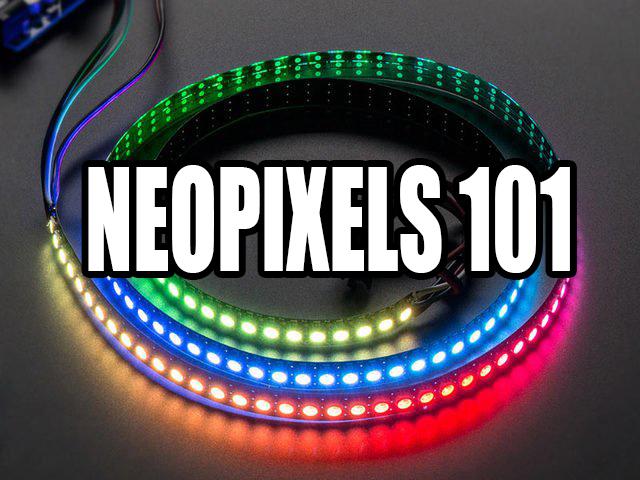
This instructable is to show you how to set up the neopixel hardware and install basic example codes.
From there you can use this information to build any number of of neopixel projects from small nightlights, or huge installation pieces.
Neopixels come in many different ways
- Strips
- matrix
- rings
- strings
- ect.
For this example we will be using the strip style. However they all connect to the Arduino the same way, with the +/- 5v and signal wire
Supplies
You will need
- computer with internet
- Arduino
- usb cord
- neopixels
- 330 ohm resistor
- soldering station
- 1000 uf capacitor (maybe)
- 5v power supply (maybe)
Software
If you don't have the Arduino IDE installed on your computer, check out this video on how to download and install the software.
Now you need the FastLED library.
Check out this video and link to get that all that installed.
https://www.youtube.com/watch?v=Dw9Vc2t4uGw
https://github.com/FastLED/FastLED
This is the link to the FastLED library in GitHub.
download and extract into your root library folder.
Hardware: Overview and Set Up
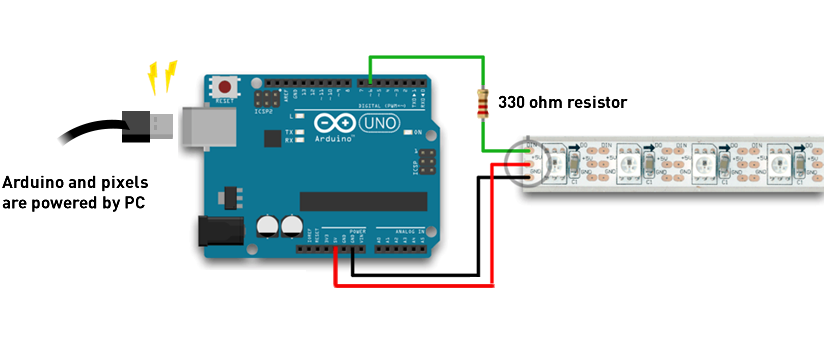
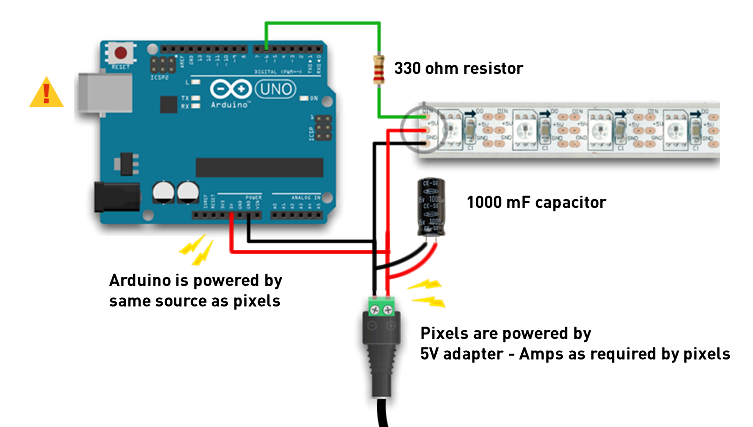
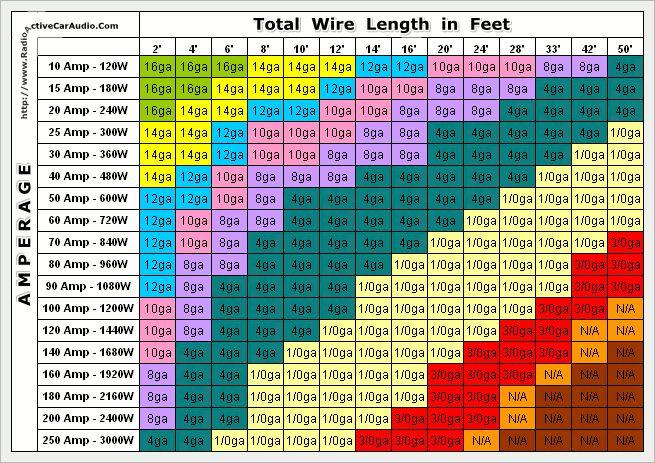
Neopixels are controlled thru a signal line, in addition to the positive and negative power lines. the leds are arranged in a daisy chain, with a data in and a data out, pad. so the led strip is directional, and clearly marked, so be sure to confirm before soldering anything. the data from the Arduino is sent thru the daisy chain making each one, individually addressable. unlike traditional rgb led strips.
Any PWM pin can be used to send signal to the neopixels. However, i always use pin 6 because it is the pin that's used most often in shields and other add ons. so i just use it by default now. is just one less thing to check after its saved in the code.
A word on power
amperage really... each Neopixel pulls 60 mA at full brightness on white. each neopixel contains a red blue and green led, each pulling 20 mA at full brightness. so if you are running straight red at full brightness. each neopixel is pulling 20 mA. if you are running purple, using the red and blue led, at full brightness. each neopixel will be pulling 40 mA. the color white uses all 3 leds... thus pulling 60 mA at full brightness.
BUT WAIT THERES MORE!!!
now that we know the individual draw, we can roughly calculate the total draw for the entire strip.
the math can get complicated depending on the code. a strip of 100 neopixels can be powered off 500 mA if only 10 neopixels are on at any given time. or a strip of 10 can dim out at the same amperage if all go full brightness white at the same time.
it will make more sense the more you work with them, but with neopixels being reprogrammable. i like to plan for the max amperage draw for the full strip. so i don't have to upgrade wiring later.
Setting up the hardware
***MAKE SURE YOU DOUBLE CHECK THE WIRING ARANGEMENT ON YOUR NEOPIXEL STRIP. THEY ARE NOT STANDARD***
solder wires to the pads on the strip.
check this video for tips on soldering... (i didnt pick the thumbnail)
solder on the strip
red for 5v
black for ground
and green for data with in line 330ohm resistor.
Connect the 5v to 5v, ground to ground, and data to pin 6. as shown in the picture.
When using external power, use the capacitor to condition the flow and prevent power spikes.
Uploading the Code
![define].jpg](/proxy/?url=https://content.instructables.com/F0R/SZ2O/KGKU4I05/F0RSZ2OKGKU4I05.jpg&filename=define].jpg)
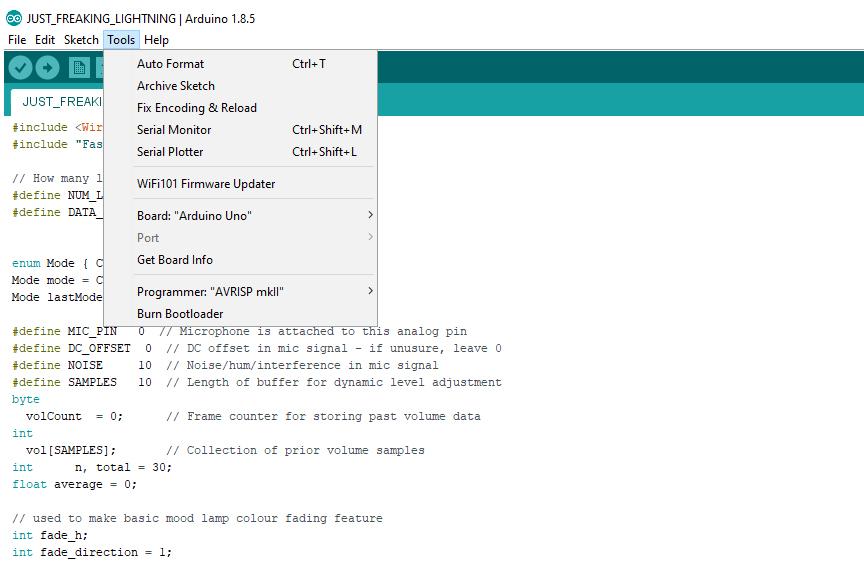
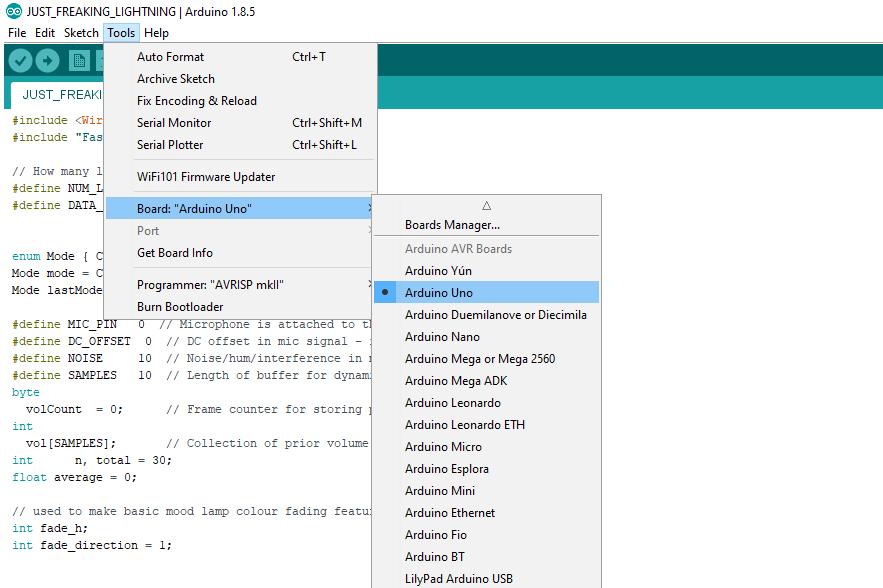
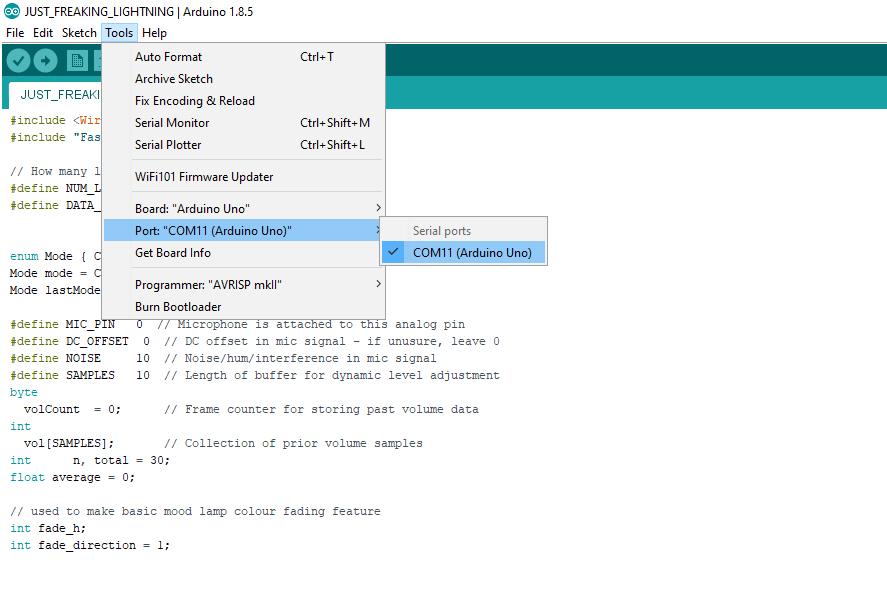
With the Arduino IDE and FastLED library already installed, open any of the provided codes.
- In the beginning of the code you will see a few things listed as #definde
- locate #define NUM_LED and update the number directly after it with how many Neopixels you have in your project.
- in the same area you will find #define DATA_PIN
- verify that the the number directly after that is 6. for digital pin 6 on the Arduino, that you have your neopixels wired to
- under the "tools" drop down menu. make sure the proper board is selected.
- then verify that the port is properly selected.
- at this point you are good to go. JUST CLICK UPLOAD!
GO BUILD!!!
ok you got the information on how to make the leds do led things... now what you going to build?
Christmas lights?
a cool night light?
write your name in lights?
im interested to see what you come up with so tag me on the social medias under Red Right Hand ARTS
check out some of my just because projects and more
i added lights behind my keys on my sound box.
updated a lightsaber to a lightning saber.
the cube was an early just because project, and its still rad!
i used them as backlighting on a sign for my shop
...then i found out that the local signage laws should be read before you start construction.
so i made a curtain for the window